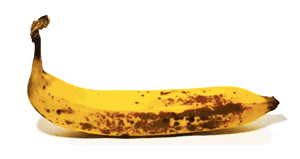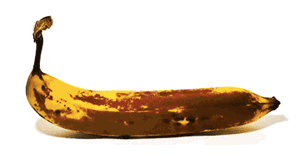Persistence through time
The question
You tend to survive from moment to moment. There is perhaps a biological (or psychological) explanation of this. Institutions like a university survive as well, as do ordinary objects like tables, chairs and bananas. Philosophers refer to this property of continued existence through time as persistence. This follows the language of David Lewis, who wrote in a famous article on the topic: "Let us say that something persists iff, somehow or other, it exists at various times" (Lewis 1986, p.204).

Parfit asked in particular when a person to remain 'the same' over time. Today we will ask a more general question, of what it might mean for objects in general to persist. Is there some property or concept that all persisting entities share? Can we determine what it is? One response could be, 'No'. Perhaps there is no unifying, general concept of persistence through time. But let's begin by investigating whether there is.
One thing that we'll have to remember is that, to give a good definition of persistence, we must not assume the thing we're trying to define. Such a definition is called circular. For example, if suppose I'm trying to explain the concept of a 'bachelor' to a child. I could say, 'It is an unmarried person.' But then if the child then asks what an unmarried person is, I cannot say, 'It is a bachelor' — or at least it would not be helpful — because this definition assumes the thing we are trying to define. You will often give definitions in your philosophical career, and it is important to keep this principle in mind.
Physics vs Metaphysics
This debate is an example of something that deals in some moments with physics and in other moments with metaphysics. The origin of these words is rather unremarkable: both were books in the collection of Aristotle's writings, and Metaphysics (literally, after/beyond physics) was traditionally placed after Physics in the canonical arrangement for these books.

The metaphysics was the book 'after/beyond' the physics in the Aristotelian canon.
Today, 'metaphysics' refers to the study of the general nature of reality. In this sense, the question of persistence is a classic metaphysical question. However, as we will see today, it also intersects the domain of physics, and indeed was first dealt with in Aristotle's Physics, rather than the Metaphysics. This is a common theme in philosophy: the division between areas of knowledge is not sharply divided, and one may often draw on ideas from one in order to learn about the other.
Defining persistence
There are two broad approaches to defining the persistence of objects that have been explored in philosophy. One is endurantism, and the other is called perdurantism (a term coined by the influential 20th century philosopher David Lewis).
Endurantism
Endurantism: A thing's persistence consists in the existence of that same thing (typically in 3-dimensions) at a moment, and then another moment.
The endurantist view is sometimes taken to be the 'common sense' perspective on endurance. Here is another classic statement of endurantism:
"[Persisting objects] have three spatial dimensions and move through time. Persistence in three dimensions means that an object is at one time, then the next time, then the next time, and so on; things are wholly present at each time at which they exist. An object that is here now is entirely here now" (Hales and Johnson 2003: 524)
And another statement, as Katherine Hawley puts it:
"We agreed that things persist by existing at more than one time, and endurance theory interprets this in perhaps the most straightforward way: you, the whole you, are present at different times, yesterday, today, and tomorrow. That’s what it is for you to persist" (Hawley 2000, p.11)
In the case of a banana, the endurantist would say that it exists in its entirety now, it exists at a later moment, and it exists at a later moment.

A banana at time t1

The same banana at time t2

The same banana at time t3
All this may seem so obvious as to be completely trivial. However, it is not quite so trivial if you think about it a little more deeply. Notice in particular that it assumes we already understand identity. For example, it assumes we know what is meant by the 'sameness' of the banana at different moments in time. How do we know that? What does it mean? As we have seen last week, it is not at all obvious what identity means in Parfit-type branching examples. In such cases, it is equally hard to understand endurantism.
Note also that, if we follow the endurantist in using identity to define persistence, then we cannot use persistence in our definition of identity. Otherwise we would have a circular definition. Is it possible to understand identity without persistence? For now, let us assume that this works, but recognising that there are still issues with this perspective for a philosopher to think through. Even given this, there are tricky problems with endurantism.

Gottfried Wilhelm Leibniz (1646–1716)
One of the main difficulties with endurantism is: how can the same thing have multiple properties, like the banana that is yellow and later brown? This concern can be formulated in terms of a principle due to Gottfried Wilhelm Leibniz, who was one of the broadest and most prolific mathematician-philosophers of the 17th and 18th centuries. Leibniz proposed that every reasonable understanding of entities and their properties should satisfy the following criterion.
Leibniz's Law. Entities that have exactly the same properties (excluding spatio-temporal properties) if and only if they are in fact one and the same entity.
This claim really consists in two implications, each of which are important enough in philosophy to be given names:
Principle of Identity of Indiscernibles: Same properties → Same entity
Principle of Indiscernibility of Identicals: Same entity → Same properties
The problem for endurantism comes out of the second of these principles. Is it true? If it is, then it appears to create a problem for the endurantist. The argument for this is due to Gareth Evans, and can be found in Hawley (2000, p.118). I reconstruct it as follows.
The Leibniz-Law Argument Against Endurantism
- If endurantism is true, then the same object can be described by different sets of (non-spatio-temporal) properties, namely at different times.
- The same object cannot be described by different sets of (non-spatio-temporal) properties. (Leibniz's Law)
- Therefore, endurantism is not true.
This is a valid argument in modus tollens form. So, if the premises are true, then the conclusion must be true. The first premise is just a characterisation of endurantism. So, it seems the only possible way for the endurantist to reject the conclusion is to reject Leibniz's law, and in particular the Principle of Indiscernibility of Identicals.
This argument can be summarised by an old observation, which was recognised already by the Jansenist philosophers Antoine Arnauld and Pierre Nicole in 1672:
"There appears to be some contradiction in speaking thus; for if the parts were altogether different, then is it not the same body." (Arnold and Nicole 1672, p.171)
How is it possible that the internal or 'intrinsic' properties of the same object, like banana's colour properties, can change from time to time? Lewis (1986) called this the problem of temporary intrinsics. The endurantist can argue that Leibniz's principle fails. But, she then still owes us account of how 'one and the same thing' can have different intrinsic properties at different times.
Alternatively, one could view the problems with endurantism as reason to seek an alternative account of persistence. The most popular alternative, formulated in the same article by David Lewis, is the following.
Perdurantism
Ted Sider characterises the spirit of perdurantism as follows.
"[Perdurantism] is the claim that time is like space in one particular respect, namely, with respect to parts. First think about parts in space. A spatially extended object such as a person has spatial parts: her head, arms, etc. Likewise, according to temporal parts theory, a temporally extended object has temporal parts. Following the analogy, since spatial parts are smaller than the whole object in spatial dimensions, temporal parts are smaller than the whole object in the temporal dimension. They are shorter-lived." (Sider 2008, p.242)
Or, as Katherine Hawley puts it, perdurantism says that, "[y]ou are a single object which exists at different times by having different parts at different times, just as a road exists at different places by having different spatial parts at those different places" (Hawley 2000, p.11). Think, for example, of a calendar describing August 2017.

Viewed as a drawing in space, the calendar consists in a big square, together with a lot of smaller squares that make it up. And as objects in space, the small squares are parts of the large one. But now view the calendar as describing a month-long duration in time. Then, in a similar way, a day in August is a temporal part of the month of August. The perdurantist claim is that not just months, but objects in general, exist in a similar way, as temporally extended entities with temporal parts.
Perdurantism: A thing's persistence consists in its entire lifetime (typically in 4-dimensions), defined by a succession of qualitatively similar temporal parts.

A banana's t1 temporal part

The banana's t2 temporal part

The banana's t3 temporal part
This is a stranger way to speak, but it is possible to describe things like the lifetime of a banana in perdurantist terms: the banana itself is a 4-dimensional object spread out in space and time, and is represented by all three photos (and everything in between) above. One then just notes that its temporal parts have different properties. The problem of temporary intrinsics is apparently avoided: the object does not have different intrinsic properties at different times; it merely has many different temporal parts.
The rotating disc
The problem
Katherine Hawley (2000), following Armstrong, suggests that perdurantism has a problem describing homogeneity. A homogeneous substance is one that is perfectly continuous and the same at all points, with no differences between any of its parts. A homogeneous disc would have no atoms, no differences in colour at any point. Everything in every location on such a disc would look exactly the same as every other location.
One of the classic ways that this problem has been made vivid is to compare rotating and non-rotating discs. The endurantist, it is claimed, can easily distinguish between these two discs: at a given moment in time, each exists, but only one is rotating.

However, it is not so easy for the perdurantist. A perfectly homogeneous disc is identical before and after rotation. Critics of perdurantism say that as a consequence, there is no way to use qualitative similarity to distinguish a rotating disc from a non-rotating one. As a result, they claim, the perdurantist account fails to capture persistence in an adequate way, in leaving out an essential feature in the case of the disc.
The argument can be formulated more carefully as follows.
The Rotating Disc Argument
- If (A) an account of persistence is adequate, and (B) there are two qualitatively different ways for persistence to occur; then that difference must be describable on the account.
- There are two qualitatively different ways for a homogeneous disc to persist, rotating and non-rotating.
- That difference is not describable on the perdurantist account.
- Therefore, perdurantism is not an adequate account of persistence.
The part about qualitative similarity is important: this is how the perdurantist gives an account of what persistence means. The endurantist is able to say that it is the identity of the banana at each moment that defines persistence. But, that strategy is not available to the perdurantist: for her, the banana does not have identity at a moment, only at all the moments that it exists. The perdurantist would not want to end up with an account of makes "persistence" associated with any random ordering of events in the lifetime of the banana! The response is to take persistence to require some qualitative similarity between the temporal parts, to ensure that the ordering is correct.
Perdurantism avoids some of the pitfalls of endurantism, and is especially apt for describing Parfit-style branching cases: on the perdurantist view, Earth-you and Mars-Replica-you are each defined by your entire lifetime, and so are distinct entities; you just happen to share a common temporal part in the past!
The 'meat' of the argument is in the third premise. To understand the argument for this premise more clearly, it helps to introduce a very common concept in metaphysics, known as supervenience. Consider two classes of properties of an object, A and B. For example, A could be the properties of the object that are visible to the unaided human eye, and B could be the locations of the atoms that make up the object.

Visual properties of a Picasso painting

Microscopic molecular properties of a Picasso painting
Supervenience is a relation that sometimes holds between the properties of a single object.
Supervenience. The A-properties of an object supervene on the B-properties of that object if and only if a change in A-properties implies a change in B-properties.
One typically finds that 'higher level' properties (in some sense) tend to supervene on 'lower level' properties, where the lower serve to underpin the higher. For example, in the paintings above, the visible properties of the painting supervene on the microscopic properties: you cannot change the appearance without giving rise to a change in the microscopic composition. However, the reverse is not true: one can of course rearrange a few of the microscopic atoms without changing the visual appearance to the unaided human eye.
Supervenience appears in an important claim about the composition of the physics world formulated by David Lewis, now known as Humean supervenience in honour of the empiricist philosopher David Hume. Lewis characterised it as the view that,
"all there is to the world is a vast mosaic of local matters of particular fact, just one little thing and then another", together with spatio-temporal relations between these "local qualities" (Lewis 1986: ix–x)
Humean Supervenience (of objects). All properties of an object supervene on local properties at a point, at a moment.

According to the Humean Supervenience view, all the facts about an entity (like London) 'supervene on' the local matters of fact associated with all the parts of that entity, which may be interpreted as what is fundamental.
If you go on to study Philosophy of Science then you will learn another sense of Humean supervenience, which applies to the laws of nature as well. However, for now let's just examine how Humean Supervenience is related to perdurance, and to the rotating disc argument.
Read Bryan's Philosophy of Science eBookHawley claims that Humean supervenience is incompatible with the rotating disc, becase there is a fact about the disc (namely, whether it is rotating) that cannot be described in terms of local facts at an instant. Since the disc is perfectly homogeneous at every point, all the facts are the same. As a result, there is no way to use such facts to say that the disc is rotating.

The second observation is then that the perdurance account presumes Humean supervenience of a certain kind. The perdurantist claims that the persistence of an object is described by the qualitative similarity between local facts at an instant. In other words, persistence supervenes on the local matters of fact at each momenet. But these local facts are exactly the same at every moment for the rotating disc. This leads to Premise 3 of the Rotating Disc Argument: there is apparently no way for the perdurantist to describe the difference between a rotating and a non-rotating disc.
Some responses to the disc
The Instantaneous Velocity Response. An initial obvious response to the rotating disc is to claim that instantaneous angular velocity is a property of the rotating disc, which distinguishes it from the unrotating disc at every moment. So, the advocate of both Humean Supervenience and of perdurantism can describe the rotating disc, and Premise 3 of the argument fails.
However, there is a consensus in the literature on the Rotating Disc Argument that this does not work. The problem, the response goes, is that velocity presupposes some notion of persistence. After all, velocity amounts to a change in position over time, and instantaneous velocity is the limit of this as the duration of time gets small. But this requires an understanding of how the same object persists in time, which would make perdurantism a circular definition of persistence.
The 'Effects of Rotation' Response. A second response is that other 'effects' associated with rotation allow one to distinguish the two cases. For real rotating systems, the acceleration associated with rotation always includes a force, that gives rise to stresses and strains in the disc, and can be detected by examining the effects of the disc on its environment. For example, as Isaac Newton famously observed, rotating a glass of water will always make the water run up the sides of the glass.
Hawley's response is that we shouldn't have to consider real discs and how they actually rotate. This is an imaginary disc, and she is interested in a definition that applies not only to real discs, but to imaginary ones as well.
One may find this unsatisfying, but there is an alternative response. Instead of comparing a rotating disc to a non-rotating one, just compare two discs that rotate in opposite directions.

For two discs rotating in opposite directions, the internal properties of associated with rotation is apparently similar. Of course, the extent to which this is the case is a matter of physics, and may fail in particular theories. These issues have indeed been investigated by philosophers of physics; if you are interested in following up on this aspect of the debate, see Butterfield (2006).
The non-Humean response. Finally, one might simply give up on Humean supervenience, and adopt a modified perdurantism that describes persistence in a way that appeals to facts that go beyond any individual moment. For example, the relation of 'qualitative similarity' might be between 'thick' durations of time, rather than between instants. This is the view that Hawley advocates.
The stage view
We conclude with a variation on perdurantism, which seeks to provide an alternative account of persistence, which Hawley refers to as stage theory. This approach to persistence was introduced by Theodore Sider (1996), and is the view advocated at length by Hawley in her (2000) book.
Stage theory: A thing's persistence consists in its entire lifetime (4-dimensions), but where a different object exists in its entirety at each instant or 'stage' (3-dimensions), and where the stages are related by a 'natural' ordering.
Stage theory is a combination of ideas from endurantism and perdurantism. Like the endurantist, the stage theorist thinks that an object completely exists at every moment. However, the stage theorist denies that it is the very same object at every moment — rather, a different object exists at every stage. Like the perdurantist, the stage theorist thinks that persistence is described by a relationship between the different moments, such as qualitative similarity (rather than an object's identity). But whereas the perdurantist says this relationship is between different parts of the same object, the stage theorist says it is a relation between completely different objects.
Thus, the stage theorist thinks it is misleading to say something like, 'There is a banana'. On this view, things like bananas must always be reinterpreted as meaning, there is a banana stage, and later there will be a different banana stage corresponding to a different object.
The table below summarises the major differences between the three views of persistence.
| Dimensions that an object exists in | Objects exist entirely at a moment | The same object exists at multiple times | Persistence defined by | |
|---|---|---|---|---|
| Perdurantism | 4 | Relation (e.g. qualitative similarity, but not identity) between parts of one object | ||
| Endurantism | 3 | identity of an object | ||
| Stage Theory | 3 | Relation (e.g. a law of nature, but not identity) between stages of different objects |
Like perdurantism, stage theory must come up with a way to say how a yellow banana now is related to the brown banana later. For the endurantist, the relationship is identity: it is the same banana. For the perdurantist, it is qualitative similarity of temporal parts: the yellow and brown banana are connected by a sequence of qualitatively similar stages. What is the relationship between the banana-stages on the stage view?
Hawley claims that some sequences of descriptions are 'more natural' than others, in some sense that could be defined in more or less precise ways. For example, there might be a law of nature that says how the object will change into a later description of an object — for example, the laws of physics, chemistry and biology determine how the yellow banana is related to the brown banana. Persistence would then be defined as a succession of stages that are related by the laws of nature.

A law of nature L defines a relationship between a yellow and a brown banana, which we might use to try to explain persistence over time.
Hawley calls this a non-Humean view, because such laws are not entirely defined at a moment, contra the claim of Humean Supervenience. Instead, this law of nature characterises a relationship between moments. The stage theorist could then distinguish the rotating disc from the non-rotating one by claiming that the difference lies in how the stages are related by some law of nature (or other 'natural' relationship).
This solution to the rotating disc problem in principle be adopted by the perdurantist as well: just say that the parts are related by a law of nature, instead of different object-stages. Do such a law (or whatever 'natural' relationship is chosen) presume some notion of persistence, and thus make the definition circular? Hawley seems to assume that the answer is "No". Whether or not this is correct is for you to decide.